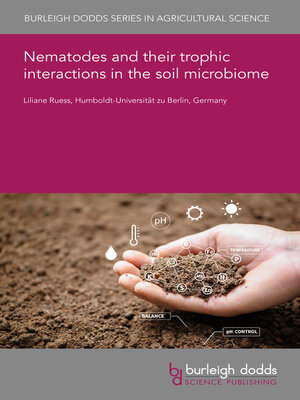Nematodes and their trophic interactions in the soil microbiome
ebook ∣ Burleigh Dodds Series in Agricultural Science
By Liliane Ruess

Sign up to save your library
With an OverDrive account, you can save your favorite libraries for at-a-glance information about availability. Find out more about OverDrive accounts.
Find this title in Libby, the library reading app by OverDrive.



Search for a digital library with this title
Title found at these libraries:
| Library Name | Distance |
|---|---|
| Loading... |
Sustainable agriculture is highly dependent on a diverse soil microbiome that facilitates ecosystem services such as nutrient cycling and organic matter degradation. These transformations are mediated by microorganisms together with fauna. Nematodes, as important microbial gazers, play a key role in these processes, e.g. nutrient mineralisation. Due to their central position in the soil food web, nematodes provide an essential link for carbon and energy flow from microorganisms to higher trophic levels. These multiple functions of nematodes have made them as useful indicators of soil condition and plant health. However, plant parasites are severe pests that control plant carbon allocation and, in turn, the rhizosphere microbiome. Another aspect is their vector potential for both plant and human pathogenic microorganisms within microbial hotspots. Overall, nematodes have a major impact on agricultural soils, and sustainable management requires consideration of their diverse interactions with the soil microbiome.







